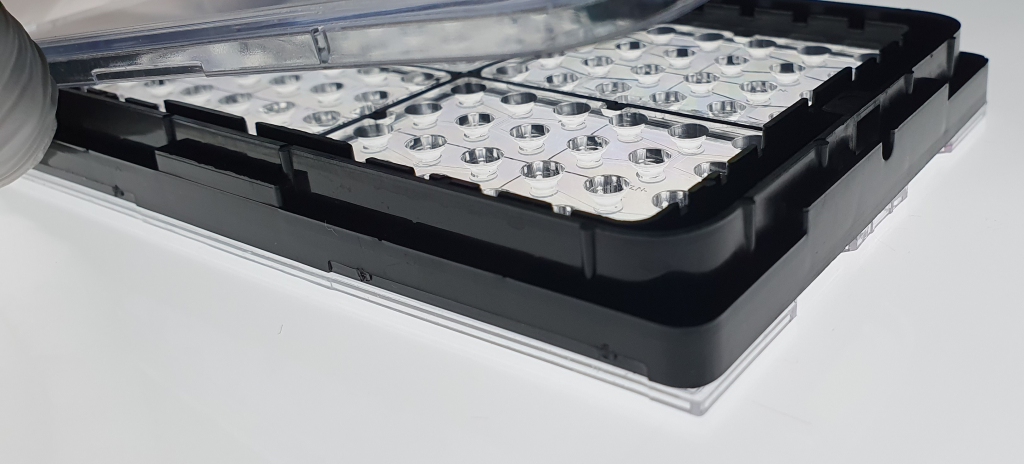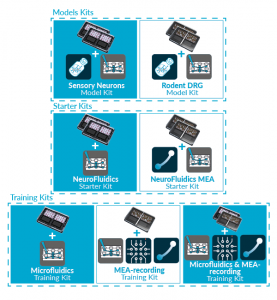Abstract Axons in the developing nervous system are directed via guidance cues, whose expression varies both spatially and temporally, to create functional neural circuits. Existing methods to create patterns of neural connectivity in vitro use only static geometries, and are unable to dynamically alter the guidance cues imparted on the cells. We introduce the use of AC electrokinetics to dynamically control axonal growth in cultured rat hippocampal neurons. We find that the application of modest voltages at frequencies on the order of 105 Hz can cause developing axons to be stopped adjacent to the electrodes while axons away from the electric fields exhibit uninhibited growth. By switching electrodes on or off, we can reversibly inhibit or permit axon passage across the electrodes. Our models suggest that dielectrophoresis is the causative AC electrokinetic effect. We make use of our dynamic control over axon elongation to create an axon-diode via an axon-lock system that consists of a pair of electrode ‘gates’ that either permit or prevent axons from passing through. Finally, we developed a neural circuit consisting of three populations of neurons, separated by three axon-locks to demonstrate the assembly of a functional, engineered neural network. Action potential recordings demonstrate that the AC electrokinetic effect does not harm axons, and Ca2+ imaging demonstrated the unidirectional nature of the synaptic connections. AC electrokinetic confinement of axonal growth has potential for creating configurable, directional neural networks. T. Honegger, M. A. Scott, M. F. Yanik, J. Voldman, Lab Chip 2013, 13, 589. Full text here


